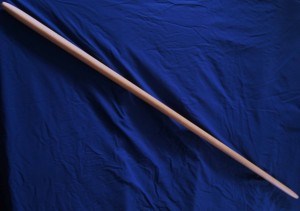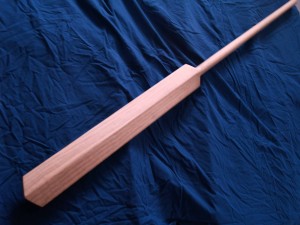Kobudo was developed on Okinawa when the peasants were denied regular weapons by local rulers and invading conquerors during the 15th and 16th century. In defiance of this weapon band, the common people took farm tools and turned them into a fighting system know as Kobudo. There is also speculation as to whether all of these weapons were derived from the farming tools, as examples of similar weapons have been found in China, pre-dating the Okinawan adaptations.
While not a part of traditional karate, many Karate practioners practice the art of Kobudo. Westmount students trained frequently with the six weapons noted below and learn katas (forms) for each weapon. Students may choose to test their skills with weapons at tournaments during Kobudo competitions as well as learn new katas or weapon skills at seminars held by qualified Genbukai instructors.
Bo is a six-foot staff, tapered at either end. It was developed from a farming tool called a tenbin: a stick placed across the shoulders with baskets or sacks hanging from either end. Bo is considered the ‘king’ of the Okinawan weapons as all other weapons’ defensives are developed against attacks from the Bo.
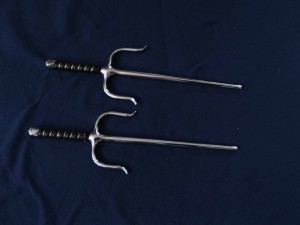
Sai is a variation on a tool used to create furrows in the ground, it appears similar to a short sword, but is not bladed and the end is traditionally blunt. The two shorter prongs on either side of the main shaft are used for trapping other weapons such as swords or bo.
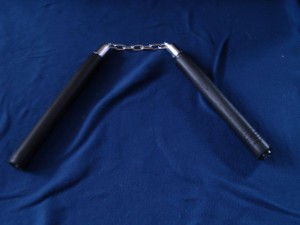
Nunchaku is two sections of wood (or for training, rubber covered metal) connected by a cord or chain. Some say it was originally a Chinese weapon, others say it evolved from a threshing flail and one theory purports that it was developed from a horse’s bit. The nunchaku was popularized by Bruce Lee in a number of martial art films.
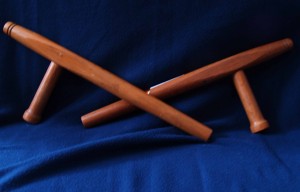
Tonfa is more readily recognised as the police night stick. It supposedly originated as the handle of a millstone used for grinding grain.
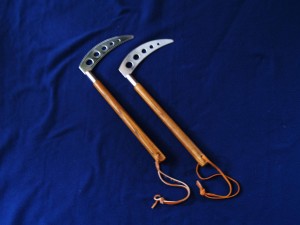
Kama is the only weapon to possess a blade. It is the traditional farming sickle, and is considered the hardest weapon to learn due to the inherent danger in practising with such a weapon.
Eci-bo or Eku-Bo is a variation of an oar. Like the Bo, movements with this weapon involve slashing, poking and blocking ones’ opponent.


